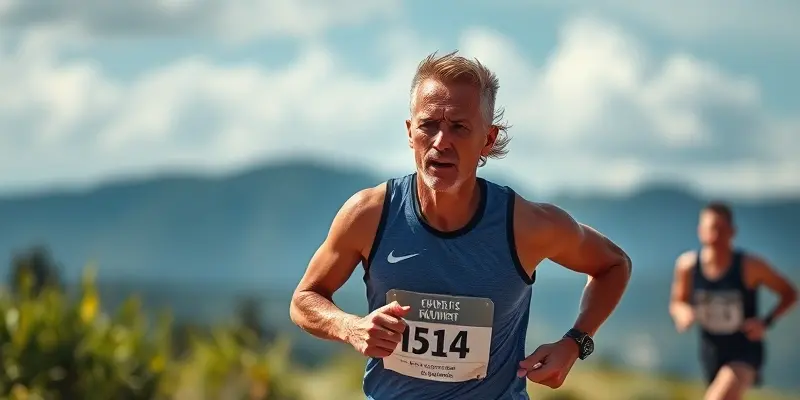By [Your Name], Fitness & Wellness Expert | Gympulse Club
Running is an amazing way to boost your health, but when summer heat hits, training outdoors demands smart strategy. Whether you’re a complete beginner, seasoned marathoner, or somewhere in between, navigating hot conditions will make or break your performance—and keep you safe from avoidable injuries. After ten years coaching athletes and active individuals, I’ve seen the difference knowledge makes. Here’s your people-first, science-backed guide to running (and recovering) strong all summer long.
Understanding the Risks of Running in the Heat
High temperatures add a hidden layer of stress to your workout. You might feel crushed by what would normally be a breeze. Why?
- Heat impairs your ability to cool down naturally. When sweat can’t evaporate fast enough, core temperature rises.
- Dehydration sneaks up quickly. Even a small fluid loss impacts performance and increases risk of muscle cramps or worse.
- Everyone is at risk. Seasoned pros and beginners alike can fall victim to heat-related illnesses—often faster than expected.
Common heat injuries include:
- Heat cramps: Sudden muscle spasms, usually in legs or abs.
- Heat exhaustion: Dizziness, rapid pulse, heavy sweating, nausea.
- Heat stroke: Confusion, loss of sweating, possible unconsciousness—a life-threatening emergency.
Essential Safety Guidelines for Summer Running
A few smart choices can keep your summer runs both safe and enjoyable.
Hydration Principles: Before, During, and After
- Start hydrated. Drink water before your run (a glass 30 minutes ahead is great).
- Sip regularly—don’t wait until you’re thirsty. For longer or hotter runs, bring a water bottle or hydration pack.
- Replace more than just water. Use sports drinks or electrolyte tablets if you run over an hour or sweat heavily.
Clothing and Sun Protection
- Choose light-colored, loose, moisture-wicking clothing. This lets sweat evaporate and body heat escape.
- Always protect skin: Apply SPF 30+ sunscreen and wear a hat. Sunburn increases dehydration risk.
Pacing, Time of Day, and Choosing Safe Routes
- Slow your usual pace—your body works harder in the heat.
- Run early or late. Avoid 10am–4pm when sun and temperatures peak.
- Pick shaded or trail routes, and avoid blacktop, which radiates even more heat.
- Stay close to help. Try loops near water fountains or places with phone signal.
Acclimatization & Monitoring Warning Signs
- Acclimate gradually. Build up heat exposure over 2–3 weeks.
- Stop immediately if dizzy, nauseous, or if sweating suddenly stops.
- Beginners: Be extra cautious! Avoid running above 32°C (89°F) without experience.
Tech & Tools for Safer Summer Runs
- Hydration gear: Water bottles, vests, handheld bottles make drinking easy.
- Cooling towels/wearable fans: Help drop skin temps during breaks.
- Sun gear: Sunglasses, UV protection sleeves.
- GPS watches/apps: Let others know your route and track distance.
Recovery Strategies for Hot-Weather Athletes
Recovery after a hot run isn’t optional—it’s essential.
- Rehydrate immediately with water plus electrolytes or a low-sugar sports drink.
- Cool down first: Use a wet towel or icy drink, and head inside if symptoms persist.
- Refuel with balanced meals: Carbs replenish energy, protein repairs muscles, and a little salt aids recovery. For more detailed nutritional advice, see our guide on B vitamins for energy.
- Rest longer: Hot conditions delay recovery; listen to your body and take extra time if needed.
When Symptoms Strike: Act Fast
- If you (or your buddy) develop cramps, dizziness, or confusion, stop running, find shade, hydrate, and cool down.
- If confusion or lack of sweating occurs: Call emergency services immediately.
Staying Motivated
- Adjust your goals: Celebrate safe completion, not just distance or speed.
- Run with a friend or club: Safety and social motivation go hand in hand.
- Track progress: Seeing small wins builds confidence, even if you’re slowing down for the summer.
Quick Reference: Common Heat Injuries & Immediate Actions
- Heat cramps: Stop, rehydrate, gently stretch, apply cool towel.
- Heat exhaustion: Move to shade, hydrate, loosen clothing, use cool packs.
- Heat stroke: Medical emergency—call 911, start aggressive cooling.
Conclusion & Takeaways
With a bit of planning, running in the heat isn’t just survivable—it can be enjoyable, building both grit and fitness. Always respect your body’s cues, gear up intelligently, and don’t hesitate to take extra recovery time. Summer’s a chance to become a smarter, safer athlete.
Check your summer running kit, share these tips with your running buddies, and post questions below—your health is always worth it.
Ready to tackle your next summer run? Gympulse Club has your back! Stay strong, stay safe, and keep chasing your goals, one stride at a time.

